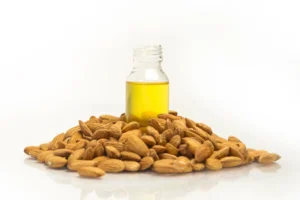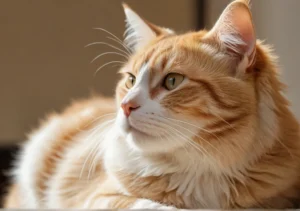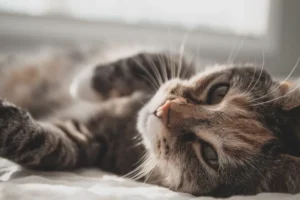Hairless cats are not completely hairless. They have a fine layer of downy fuzz that gives them a soft and velvety feel.
Hairless cats are not hypoallergenic. It’s the proteins in their saliva and dander that can trigger allergies, not their fur.
These few sentences must be short and snappy, inviting, and direct.
Hairless cats are fascinating creatures that often leave owners wondering why their skin feels oily.
Hairless cats are oily due to the lack of fur to absorb and distribute their natural oils effectively.
The Role of Sebaceous Glands
Let’s talk about the sebaceous glands – the little factories in your hairless cat’s skin that produce oil to keep their skin moisturized and protected. These glands are more active in hairless cats because they don’t have fur to distribute the oil evenly, leading to that oily appearance. Without fur to absorb the oil, it accumulates on the skin’s surface, giving hairless cats their distinctive oily texture.
Now, why are these glands working overtime? One reason is that hairless cats have fewer layers of skin compared to their furry counterparts, which means their skin is more exposed and vulnerable. To compensate for this lack of protection, the sebaceous glands kick into high gear, producing more oil to shield the skin.
So, the next time you notice your hairless cat looking a little shiny, remember it’s all thanks to those hardworking sebaceous glands doing their best to keep your feline friend’s skin healthy and protected.
Environmental Factors and Diet
Your hairless cat’s skin can also be affected by external factors like the environment and what they eat. High humidity levels can increase oil production in hairless cats, making their skin appear even oilier. Additionally, a poor diet lacking essential nutrients can impact the health of their skin, leading to an increase in oiliness.
To combat this, try to provide your hairless cat with a balanced diet rich in essential fatty acids and vitamins that promote skin health. Including supplements like omega-3 fatty acids can help regulate oil production and keep your cat’s skin in top condition.
Moreover, ensuring your cat has access to a comfortable and clean environment can also help regulate their skin’s oiliness. Regular grooming and baths with suitable products can control excess oil, keeping your hairless cat’s skin clean and healthy.
Remember, a holistic approach that considers both internal and external factors is key to managing your hairless cat’s oily skin effectively.
Grooming Habits
Hairless cats, such as the Sphynx breed, are prone to oily skin due to their lack of fur, which normally helps to absorb and distribute oils. To combat this oiliness, regular grooming habits are essential.
First, bathe your hairless cat regularly using a mild, hypoallergenic shampoo to remove excess oils and dirt. Be sure to rinse thoroughly to prevent irritation. Use a soft cloth to gently wipe down your cat between baths to help control oil buildup.
Second, moisturize your cat’s skin with a non-greasy, hypoallergenic lotion to prevent dryness, which can also contribute to oiliness. Ensure the lotion is specifically formulated for feline skin to avoid any potential reactions.
Lastly, monitor their diet to ensure they are receiving proper nutrition, which can impact the health of their skin. Consult your veterinarian for recommendations on the best diet for your hairless cat to maintain a healthy coat and skin.
Common Skin Conditions
Hairless cats are prone to a few common skin conditions due to their oily skin. One such condition is feline acne, which can develop on their chin and lip area. Regular cleaning of their chin with medicated wipes can help prevent and treat acne.
Another common issue is dermatitis, which can cause redness, itching, and irritation. Avoid using harsh chemicals or cleaning products around your hairless cat, as they can exacerbate dermatitis. Consult your vet for proper treatment if your cat shows signs of this condition.
Additionally, hairless cats are prone to sunburn due to their lack of fur protection. Limit their time in direct sunlight and consider using pet-safe sunscreen if they must be outdoors. This can help prevent painful burns and further skin issues.
Remember, regular grooming and proper care are essential to help your hairless cat maintain healthy skin and reduce oiliness.
Managing Oily Skin
Does your sphynx cat leave oily paw prints wherever they go? Don’t worry, it’s not just your kitty; hairless cats tend to have oilier skin compared to their furry counterparts. This excess oil production is due to the absence of hair to absorb and distribute natural skin oils. To help manage the oiliness of your hairless cat’s skin effectively, consider the following tips: – *Proper Diet: *Ensure your cat is receiving a balanced diet rich in essential fatty acids to promote healthy skin and reduce excessive oil production. – *Regular Cleaning: *Gently wipe your cat’s skin with a soft cloth or pet-safe wipes to remove excess oil buildup and prevent skin issues. – *Hydration: *Provide ample water for your cat to drink to help regulate oil production from the inside out.
Bathing Techniques
When it comes to bathing your hairless cat, it’s essential to strike a balance between reducing oiliness and maintaining skin health. Here are some tips for proper bathing techniques: 1. *Frequency: *Bathe your hairless cat once every 1-2 weeks to prevent excess oil buildup without stripping the skin of essential oils. 2. *Water Temperature: *Use lukewarm water to avoid drying out your cat’s skin while effectively removing excess oil. 3. *Gentle Shampoo: *Choose a mild, hypoallergenic shampoo specifically designed for cats to cleanse the skin without causing irritation. 4. *Moisturize: *After bathing, apply a moisturizer formulated for cats to keep their skin hydrated and balanced.
Remember, each hairless cat is unique, so it may take some trial and error to find the right bathing routine that works best for your feline friend.
Proper Nutrition
Maintaining a balanced diet for your hairless cat is crucial in supporting their skin health and reducing oiliness. Omega-3 fatty acids found in fish oil can help regulate skin oil production and improve skin texture. Incorporating lean proteins and antioxidant-rich fruits and vegetables can also promote healthy skin and reduce excess oiliness. Remember, a well-rounded diet is key to keeping your hairless cat’s skin in top condition.
Additional Tip:
-Consider incorporating supplements like vitamin E or biotin to further support your hairless cat’s skin health and reduce oiliness.
Regular Veterinary Check-ups
Scheduling regular veterinary check-ups for your hairless cat is essential to address any skin issues promptly and effectively. Your vet can detect skin problems early on, recommend appropriate treatments, and provide guidance on skin care routines specific to your cat’s needs. By staying proactive with veterinary check-ups, you can ensure your hairless cat’s skin remains healthy and oil-free.
Fun Facts About Hairless Cats
Did you know that hairless cats, also known as Sphynx cats, actually do have a fine layer of fur that makes their skin feel like warm suede? This unique characteristic is what sets them apart from other breeds.
Contrary to popular belief, hairless cats are not actually completely hairless. They have a very fine layer of downy fuzz that gives them their soft and velvety feel. This fuzz can sometimes give off a slightly oily appearance, but it’s not actually oil. It’s just their natural skin oils that help keep their skin moisturized.
Another interesting fact is that hairless cats are not hypoallergenic. While many people assume that having no fur means they won’t trigger allergies, it’s actually the proteins in the cat’s saliva and dander that cause allergic reactions, not the fur itself.
So, the next time you come across a hairless cat and notice their slightly oily skin, remember that it’s just their natural oils at work to keep them healthy and moisturized. And don’t forget to give them some extra cuddles for being such unique and lovable companions!
Hairless cats are not completely hairless. They have a fine layer of downy fuzz that gives them a soft and velvety feel.
Hairless cats are not hypoallergenic. It’s the proteins in their saliva and dander that can trigger allergies, not their fur.
Alex, a passionate animal lover, has experience in training and understanding animal behavior. As a proud pet parent to two dogs and three cats, he founded AnimalReport.net to share insights from animal experts and expand his knowledge of the animal kingdom.




